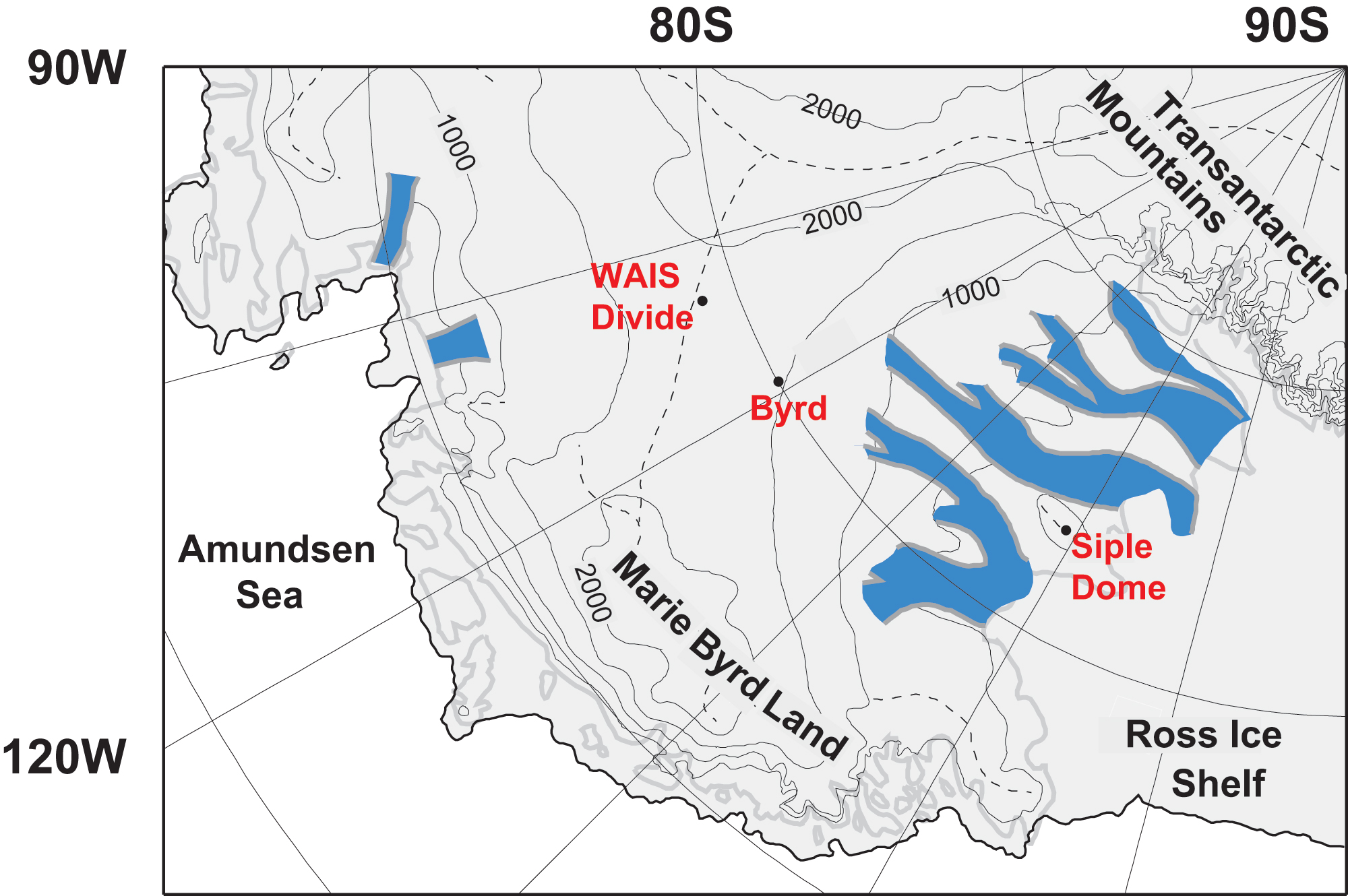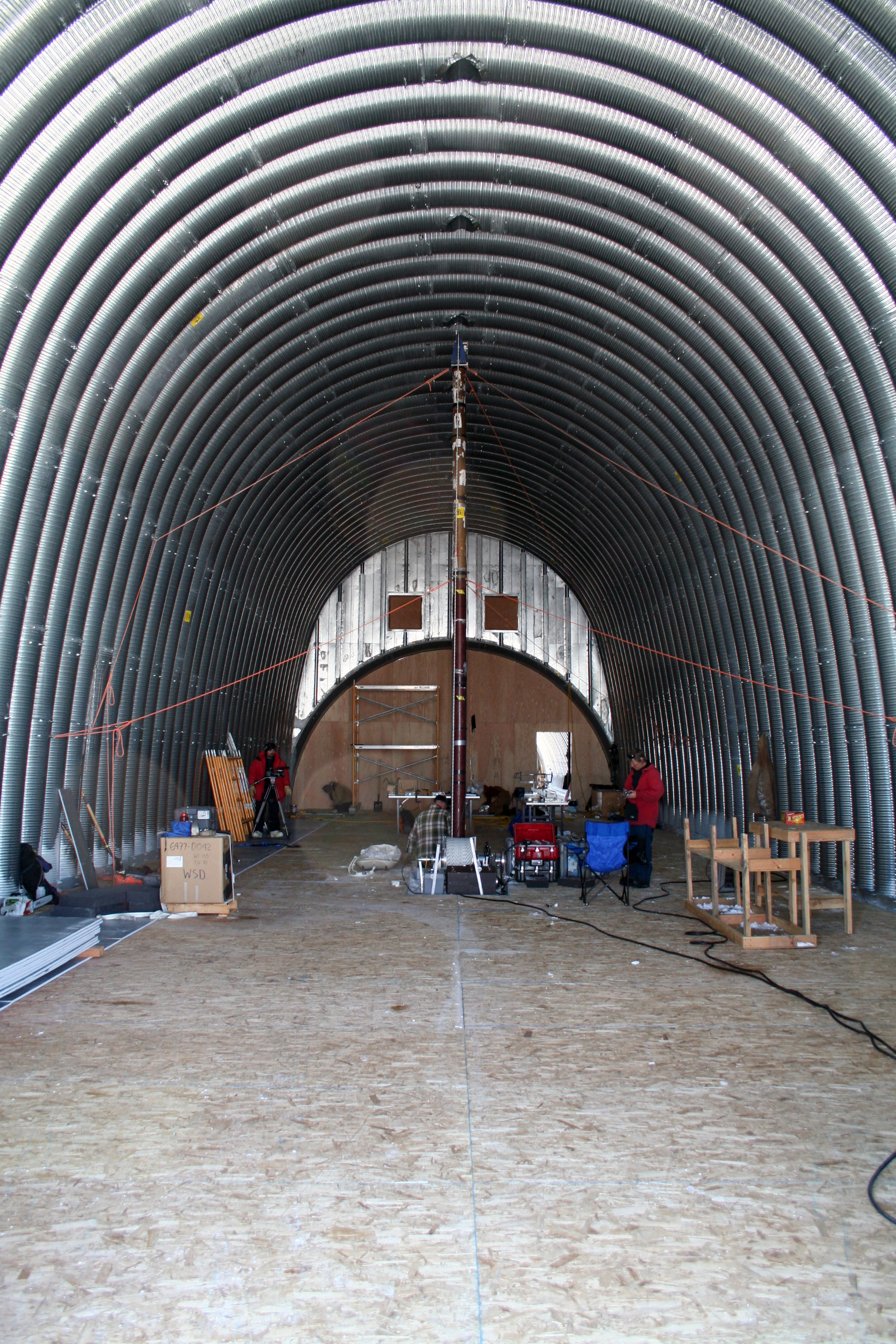
Project Overview
WAIS DIVIDE is a United States deep ice core project in West Antarctica funded by the National Science Foundation (NSF). The purpose of the project is to collect a 3,400 meter deep ice core from the flow divide (similar to a watershed divide) in central West Antarctica in order to develop records for the last 100,000 years of: global climate, the stability of the West Antarctic Ice Sheet (WAIS), and biological activity. The WAIS Divide ice core will provide Antarctic records of environmental change with the highest possible time resolution for the last ~100,000 years; it will be the Southern Hemisphere equivalent of the Greenland GISP2, GRIP, and North GRIP ice cores. The most significant and unique characteristic of the WAIS Divide project will be the development of climate records with an absolute, annual-layer-counted chronology for the most recent ~40,000 years. In addition, due to the high snowfall rate, the WAIS Divide record will have only a small offset between the ages of the ice and the air trapped in the ice. The combination of high-time resolution and minimal age offset will allow us to study interactions between climate variations and atmospheric composition with a level of detail previously not possible in deep long Antarctic ice core records. The WAIS Divide ice core is expected to produce the best atmospheric gas records of the past 100,000 years ever obtained. As such, the WAIS Divide ice core will enable detailed comparison of environmental conditions between the northern and southern hemispheres, and the study of greenhouse gas concentrations in the paleo-atmosphere, with significantly greater accuracy than is possible with any existing or planned ice core record.

The main objectives of this project are:
- Develop the most detailed record of Greenhouse gases possible for the last 100,000 years
- Determine if the climate changes that occurred during the last 100,000 years were initiated by changes in the northern or southern hemisphere
- Investigate the past and future stability of the WAIS
- Investigate the biology of deep ice
Ice Coring and Drilling Services at the University of Wisconsin constructed a new deep drill (called the DISC [Deep Ice Sheet Coring] drill) for the WAIS Divide project. The DISC drill utilizes many technologies proven on Russian and European drills, as well as several new innovations. The drill was tested at Summit Greenland in summer 2006 and was very successful.
A seasonal field camp at WAIS Divide has been established. An arch facility to house the DISC drill and to handle the core has been constructed, and the pilot hole has been drilled and cased. In the past two field seasons more than 1,300,000 pounds of cargo, passengers, and fuel have been flown to the WAIS Divide camp. During the upcoming 2007-2008 Antarctic field season construction of the arch facility will be completed, the DISC drill will be installed, and deep drilling will begin.
Project Organization
The Office of Polar Programs at the NSF funds the project with most of the science funding coming from the Glaciology Program managed by Julie Palais. Some additional science funding is provided by the Antarctic Organisms and Ecosystems Program. Logistical support is provided by NSF’s Division of Antarctic Infrastructure and Logistics and is managed by Matthew Kippenhan at Raytheon Polar Services Company. The Science Coordination Office (SCO) coordinates the scientific goals of the project. The SCO is led by Kendrick Taylor (Chief Scientist; Desert Research Institute, University of Nevada-Reno) and managed by Mark Twickler (Institute for the Study of Earth, Oceans, and Space, University of New Hampshire).
Contact Information
More information can be found at http://waisdivide.unh.edu/ or by contacting Kendrick Taylor (email: kendrick.taylor@dri.edu).
